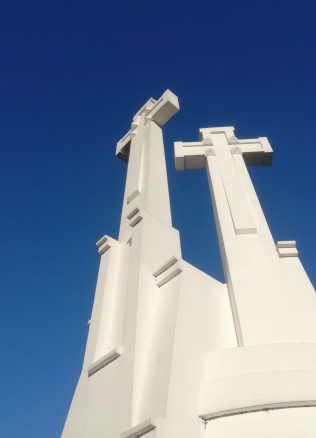Bekes Hill
While listing famous foreigners of old Vilnius, one should reserve an entry for Hungarian nobleman and talented military commander Gáspár Bekes (1520–1579). Born and bred in the border region between present-day Hungary and Romania, although he has visited Vilnius just twice, the city of Vilnius became his final resting place and still keeps his memory, as one of the central hills bears his name.
The future military man was born into the family of Hungarian middling nobles who owned several hamlets. Bekes fled Transylvania and had all his possessions confiscated but found refuge in Poland. Bekes joined Báthory’s army in 1576 and remained in his service until his last day. The brothers became famous for their bravery in the fight against Muscovy during the Livonian War (1558–1583), and the siege of Polotsk (1579) in particular. After the successful siege of Polotsk, Bekes as a war hero returned to Vilnius in October of 1579. Several days on, at the end of October, Bekes traveled to Grodno where on 7 November 1579 he suddenly died. Perhaps his health declined due to exhausting military campaigns, or perhaps all it took was a simple cold.
According to a legend, right before his death, Bekes cried out: “Coelum non curo, inferos non timeo” (I yearn for no heaven and fear no hell). This, apparently, reflected some of his Antitrinitarian beliefs that denied him a place in a cemetery. The Hungarian was eventually buried on Bald Hill. Allegedly, the spot overseeing Vilnius was chosen by King Stephen Báthory himself, as a sign of respect for the brave commander.
By the end of the 16th century, the burial place of the Bekes brothers was marked with a 20-metre tall tower. The tower was still intact in the first half of the 19th century, although Vilnelė washed the fundament of the hill itself. The tower collapsed in 1841. Local historians found a skull and a yellow velvet cap under the rubble. They took the findings to the Museum of Antiques and Archaeology in Vilnius, but the skull and the cap were later lost.
Learn more about a man who became a legend of Vilnius by clicking on this link.
